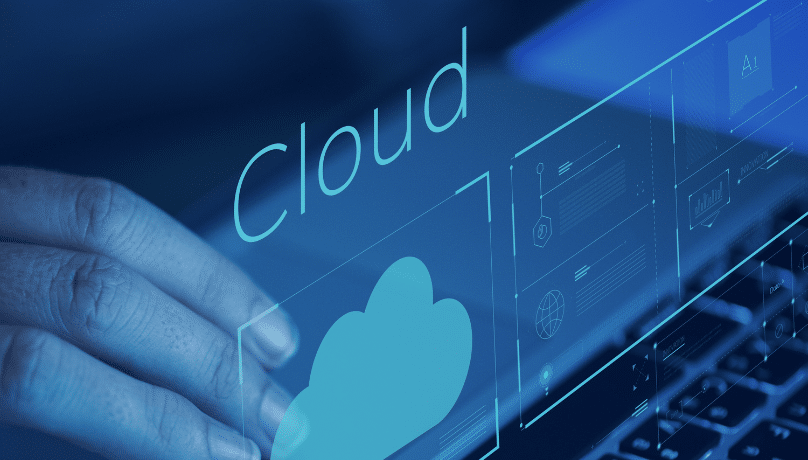








In this technology 4.0 era, “cloud computing” is a familiar term that you might already have heard of. However, do you know exactly what it means or how it works? There are also multiple types of cloud models. What is the difference between them and what will be best for your organization? Let’s explore the term with this article!
It is defined as “the delivery of on-demand computing services – from applications to storage and processing power – typically over the internet and on a pay-as-you-go basis.”
Cloud computing includes many computing services such as servers, storage, databases, networking, software, analytics, and intelligence—over the Internet (“the cloud”) to offer faster innovation, flexible resources, and economies of scale.
In the 1950s, developers created a military mainframe to link computer terminals across an internal matrix, responding to the increasing demand for people to access technology.
In the 1960s, the term “cloud computing” first appeared in a Compaq internal document.
By the 1990s, as technology became more affordable, a huge number of personal computers were being connected. In the mid-1990s, “cloud computing” became a thing, Google and Microsoft are those of the first to step in and push the market to grow. From SaaS only, then comes the expansion of PaaS and IaaS.
The cloud created a cultural shift never seen before. Many services launched and created their own cloud. The term cloud here is used as a metaphor. Things stored online, you can see it but it is not visible.
There are four types of cloud computing: private cloud, public cloud, hybrid cloud, and community cloud:
A single organization typically uses this type of cloud computing, limiting access to only individuals within that organization. The company that owns the cloud has full responsibility for the software and infrastructure. If you need more space, it takes a whole IT team to update the platform and takes quite an amount of time.
Many consider this type of cloud computing to offer greater safety and security for all valuable and confidential assets, despite its potential for inconvenience.
It is used by literally anyone who has access to the internet with a massive amount of available space. Examples of providers that you might have already heard of or actually even used are Google, Amazon, and Microsoft. This type of cloud computing brings lots of benefits for individuals or organizations from an economic perspective. It is also convenient as it is a “Pay as you go” type of service if you want more space, just need to pay for it. However, one demerit of public cloud computing is that it may contain security risks for organizations as everything is public and it increases the possibility of people accessing your company/organization’s assets.
The public cloud lacks security, private cloud is not scalable. And you might start wondering if there is a combination of the good points of those cloud computing types. The answer is yes there is! It is a hybrid cloud that combines the scalability of the public cloud and the security of the private cloud. Many organizations currently utilize this option for the benefits it brings to their organization, making it a preferred choice. There is a growing usage of this type of cloud computing.
The last type of cloud computing is the community cloud, which is the rarest one to use. Multiple distinct organizations utilize the community cloud as a multi-tenant platform to share the same applications. These organizations and businesses are usually in the same field and all share the same security concern. However, there is still an underlying problem with this type of cloud computing you can not be certain that the partner whom you are sharing the cloud platform with is trustworthy enough and hence not stealing ideas or resources from you.
Cloud computing can be broken down into three service models:
Refers to renting out fundamental building blocks of computing: physical or virtual servers, storage, and networking. This type of service’s main aim is for companies that want to build applications from the very ground up and want to control nearly all the elements themselves. This will require a high-level internal IT team to be able to build and maintain the platform or the organization could choose another option, outsourcing – hire somebody to do it for you. IaaS service providers include Google Cloud Platform and Amazon EC2.
This model is the middle of the other two. Not only provides underlying storage, networking, and virtual servers but also includes the tools and software that developers need to build applications on top of that could include middleware, database management, operating systems, and development tools.
This kind of model refers to the circumstance where an organization/business lets others access their application through a website. Software providers charge for permission to use through billing, which is based on factors such as the number of users, usage time, and amount of transactions. This model, probably the most commonly used of all three, also relieves software providers from the burden of building or upgrading the underlying hardware and operating system, as they take care of these tasks for users.
Sometimes, organizations can utilize more than one cloud computing model to serve their purpose. If you are wondering which kind of cloud computing model or platform to use, you can contact us to receive consulting on the problems. Or if you are looking for a company to help you with setting up software or a platform for your organization, we are here to help and will implement any of your requests to produce the best outcome.
Stay ahead in a rapidly changing world with our monthly look at the critical challenges confronting businesses on a global scale, sent straight to your inbox.